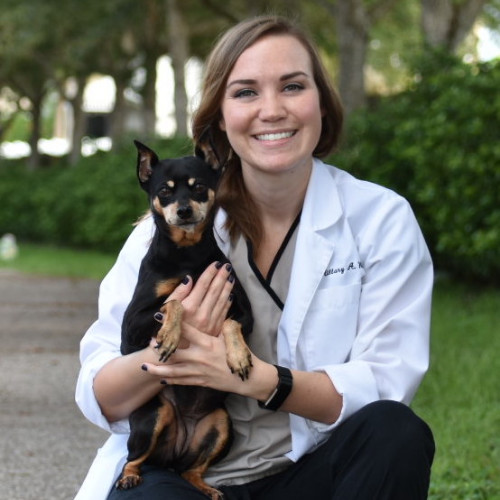Dogs eat bees more often than you might think. Dogs love to explore the outdoors, and they do so with their nose. It’s not uncommon for them to stumble across a creature or two while playing in the yard, and the first thing they’re going to want to do is smell it.
Then, if they get the chance, they might continue their exploration with their mouth. This may lead them to ingest some less-than-desirable things, such as bees. Bees also attract dogs with their buzzing, and some dogs even find it fun to chase them around.
Unfortunately, bee stings present a potentially hazardous situation for dogs, especially if your dog has an allergy. Read on to find out what you need to do if your dog eats a bee!
How to determine if your dog ate a bee
It might not be readily apparent that your dog has even eaten a bee, if you didn’t see them do it. But if they’re acting strange or like they’re in pain after they’ve been outside, it’s something you need to check out. Look inside their nose and mouth, paying special attention to their gums, tongue, and the back of their throat. Is anything red or swollen from a sting? Do you see a stinger? If so, chances are your dog has been stung.
Was the bee alive or dead?
We’ve all found dead bees in our yard, patio or around the home so it wouldn’t be uncommon for your dog to discover one too. If the bee was dead there’s little reason to worry. The venom in a dead bee is typically not potent enough to cause harm to a dog if consumed.
What to do if your dog ate a live bee
Confirm that your dog had actually been stung. If they seem like they are in pain or not acting normal, try to find the location of the stinger but do NOT try to remove it yourself. Not only could this cause your dog more pain, it could also accidentally release more venom.
The next step would be to call your veterinarian and seek their advice. Most likely they’ll ask you to bring the dog in so that it can be examined, and they’ll be able to remove the stinger in a safe way.
The dog will need to be monitored for signs of an allergic reaction. If your dog has any of the following symptoms, there’s a good chance that they are allergic to bees:
- Difficulty breathing
- Swelling around the mouth, nose and neck
- Lethargy
- Vomiting or diarrhea
- Coughing
Bee stings inside the mouth can be extremely dangerous, even if your pet is not allergic. They could cause swelling of the mouth and nose, potentially leading to a blocked airway. It’s important that they are seen by a vet immediately in case they need to have Benadryl or another type of antihistamine administered.
How to prevent your dog from eating bees
Unless you never let your dog outside, it will be impossible to prevent them from being near bees 100% of the time. But there are some things you can do to make your yard less friendly to bees.
1. Don’t plant flowers that attract bees, such as sunflowers, lavender, and roses
2. Plant plants that repel bees, like mint, rosemary, and basil
3. Try to distract your dog from chasing bees by giving them something else to chase, like a ball or a stick.
4. Make sure your dog is well-trained and responds to commands like “leave it”, so that they’ll listen if you command them to stay away from a bee.
5. Be aware of your surroundings, and have a plan in place in case your dog gets stung. Your first line of defense should always be to contact your veterinarian!
FAQs
-
Dogs can be allergic to bees just like humans but not all dogs will have an allergic reaction when stung. Reactions can be mild or severe, so monitoring symptoms becomes important.
-
Yes, wasps and hornets have a smooth stinger, which means they can sting multiple times before losing their stinger. So if your dog eats one they may be stung multiple times in the mouth, throat, or digestive tract, which can cause more serious complications than a single bee sting.

